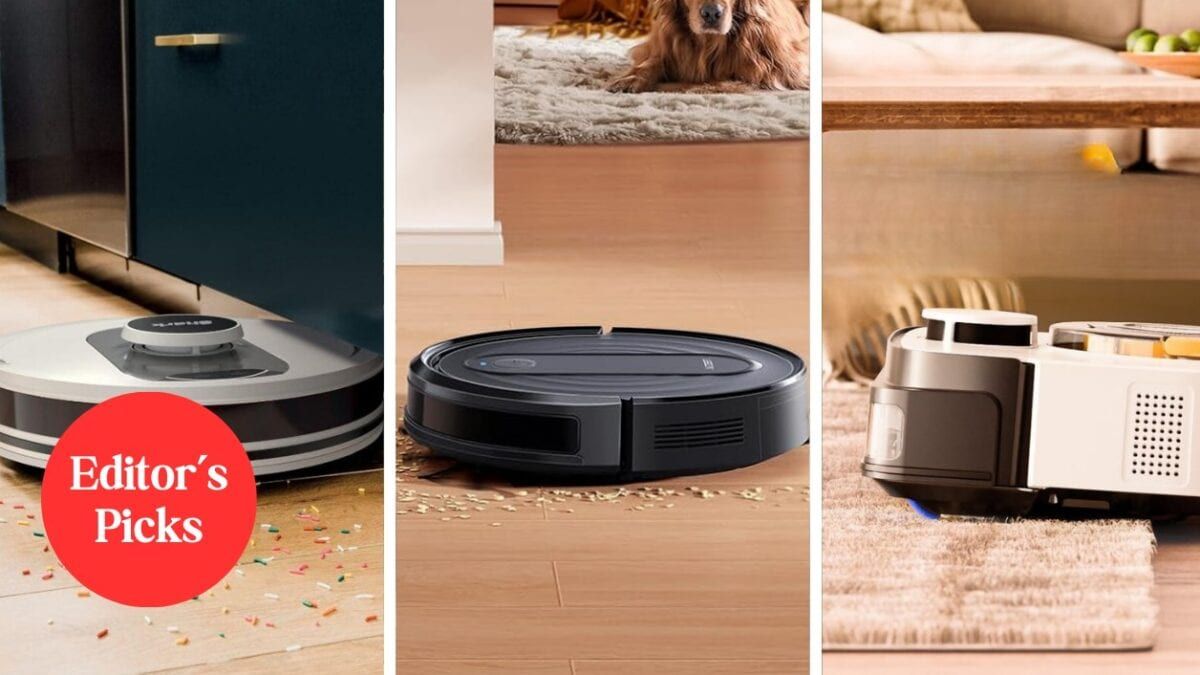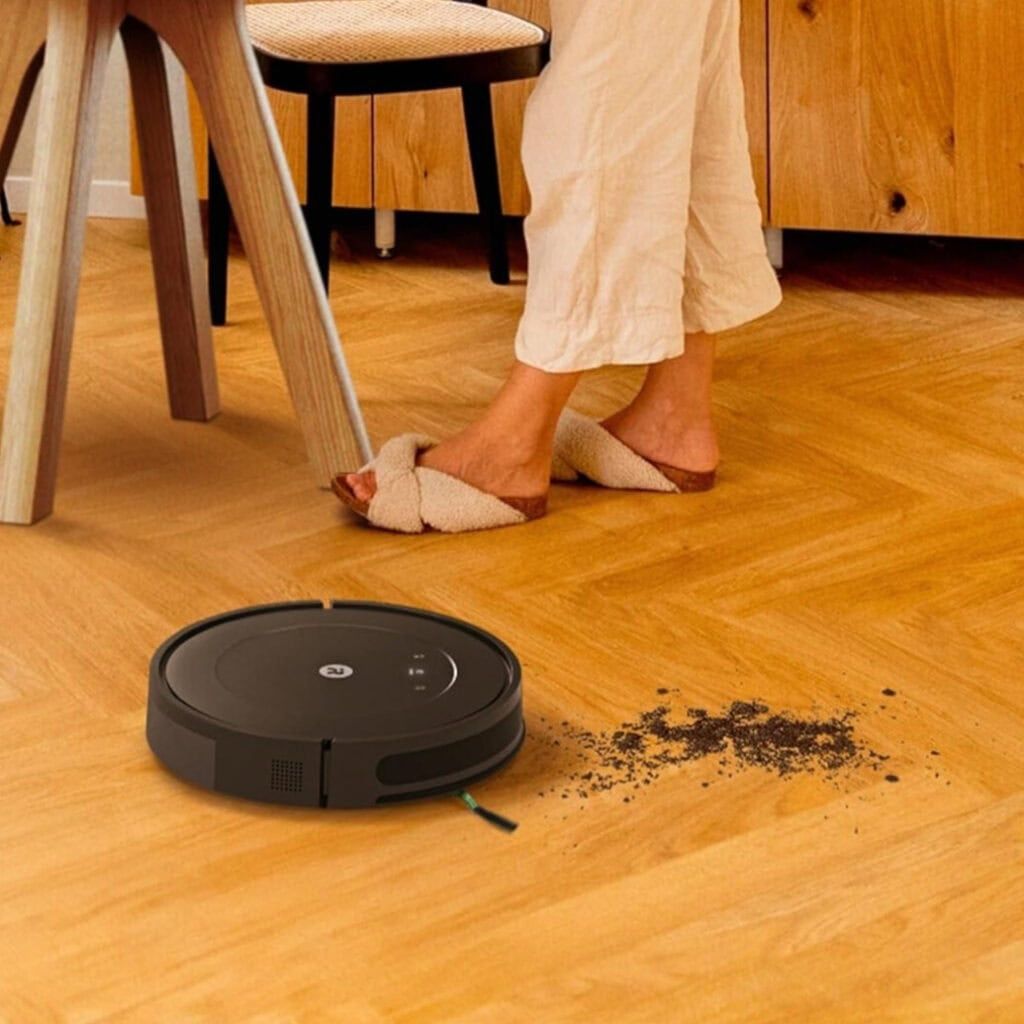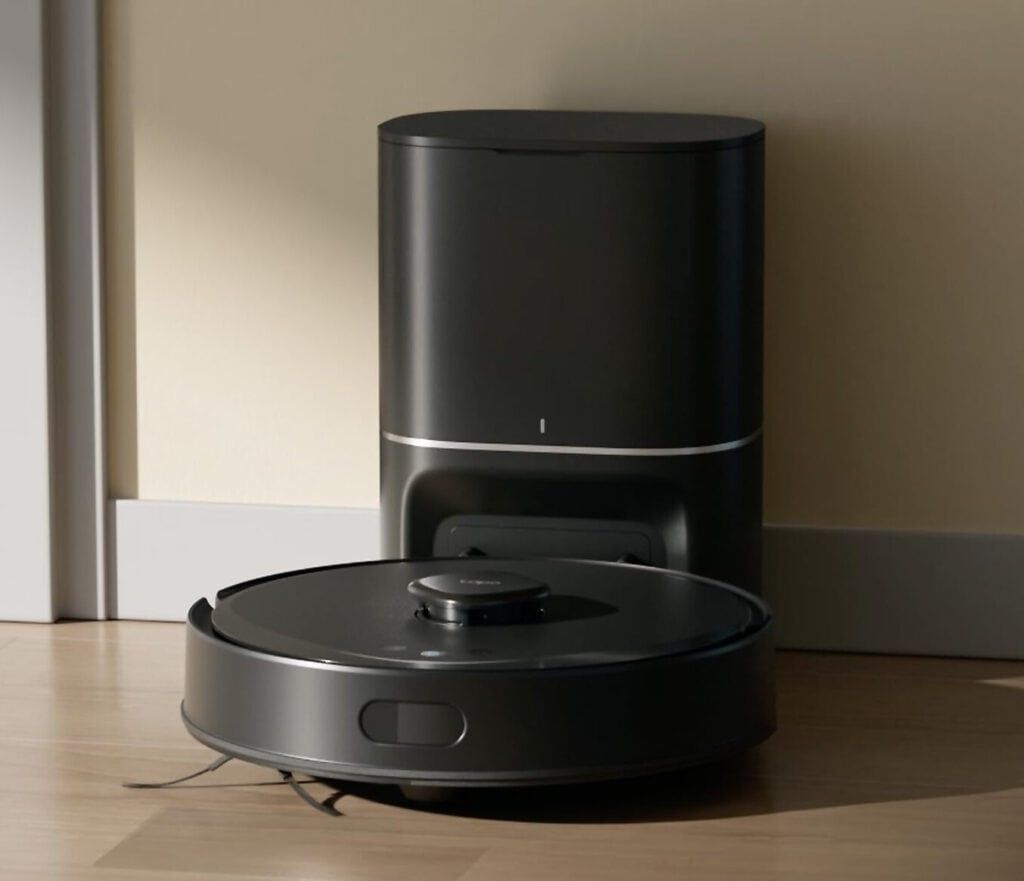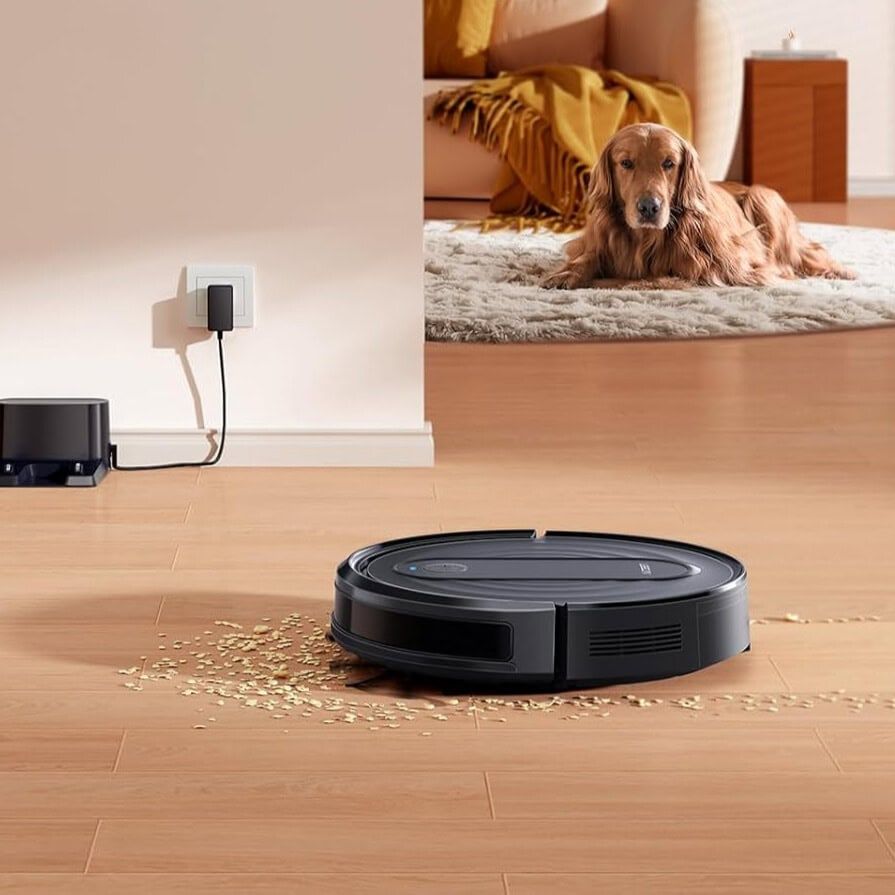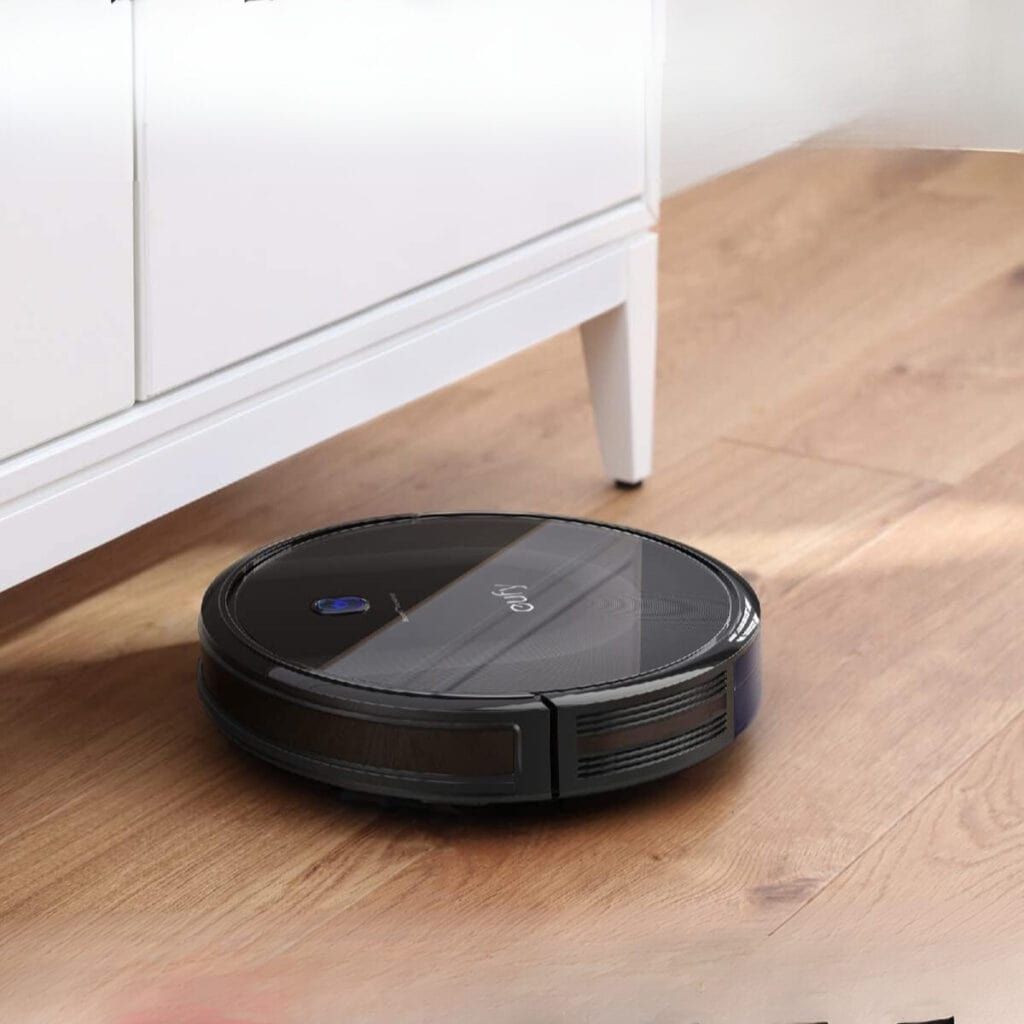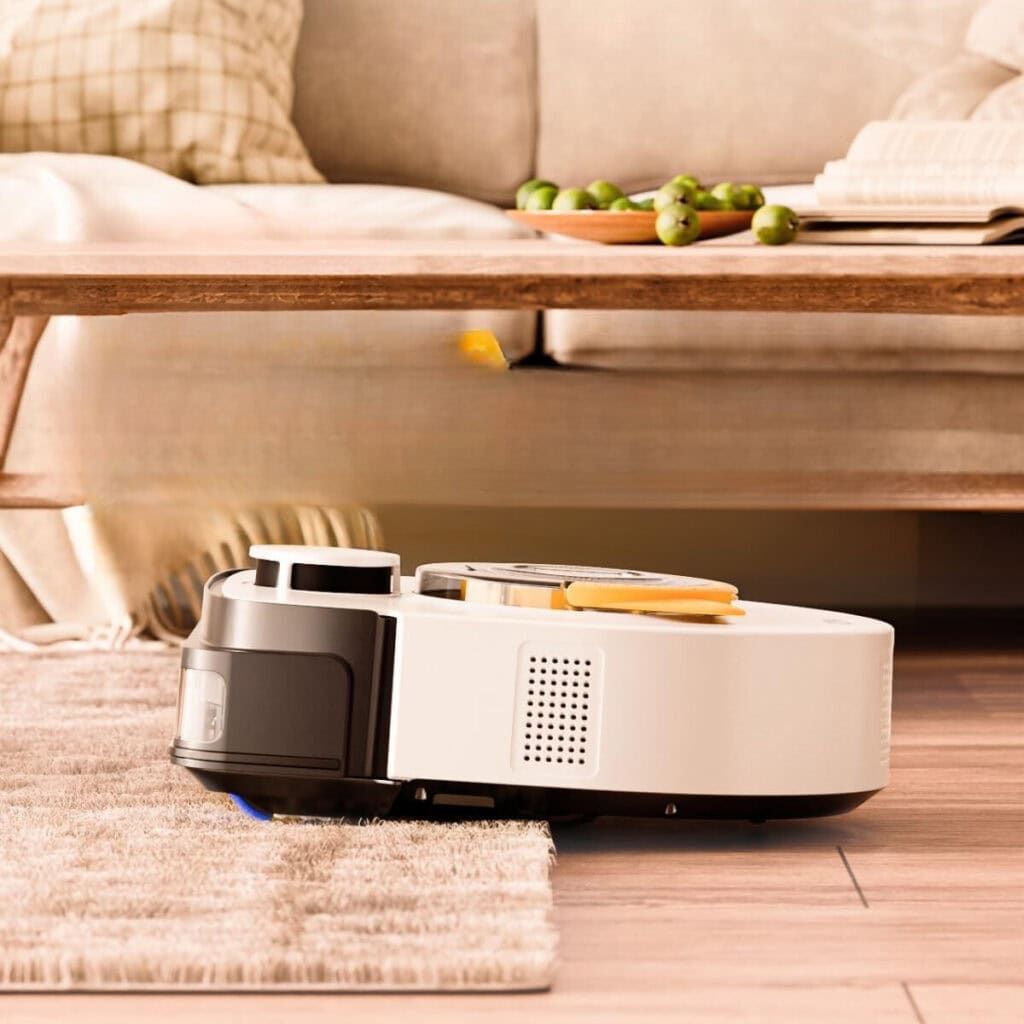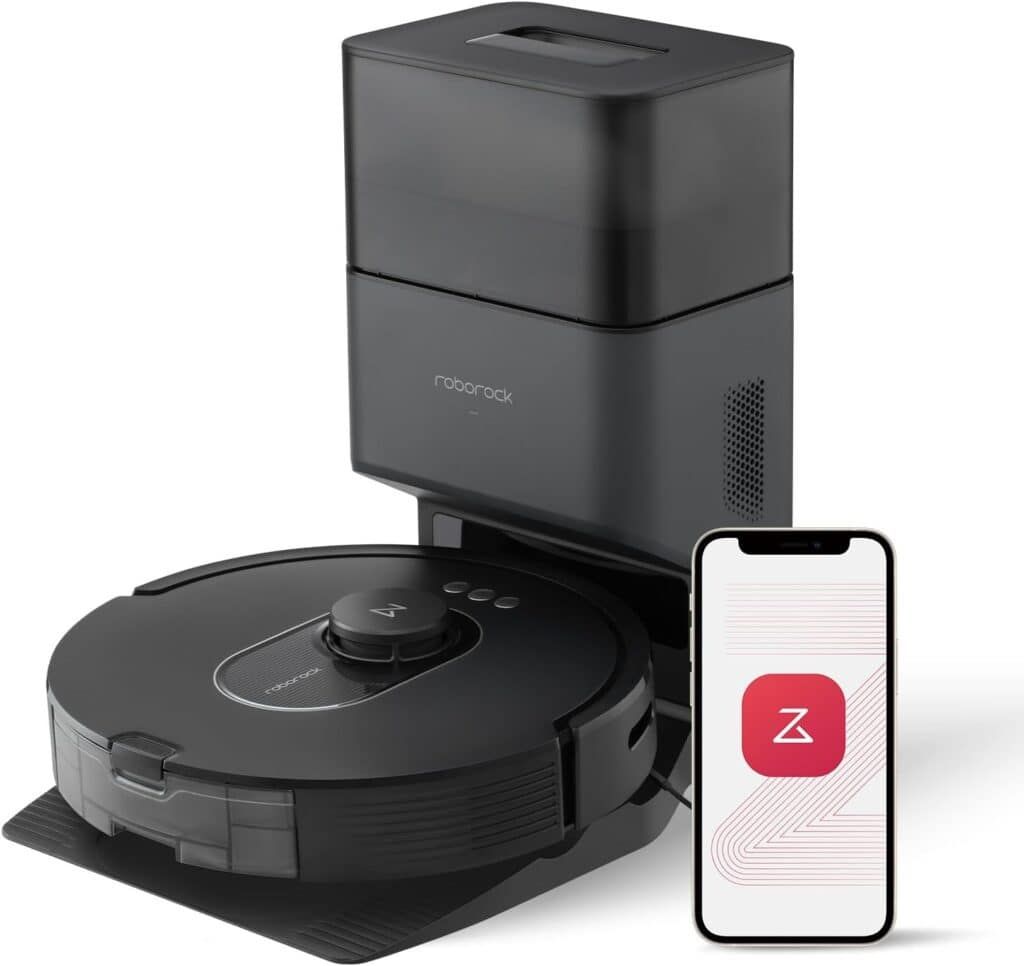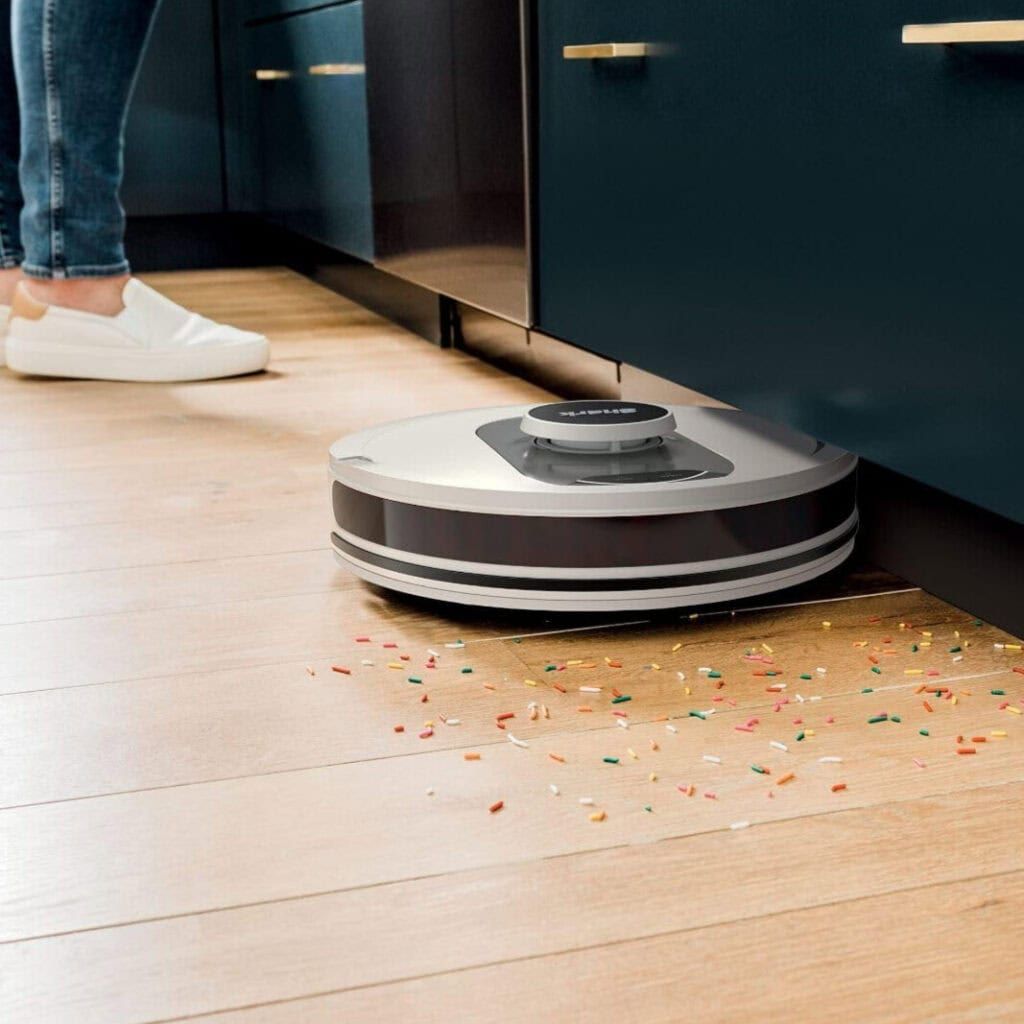We tried 15 top-selling robot vacuums, and these 7 performed the best.
On carpet, hardwood, and tile, the Roomba Essential Vac delivered excellent cleaning performance at a reasonable price point. For those seeking a dual-function cleaner, the Tapo LiDAR Vacuum and Mop impressed us with its powerful suction and intelligent floor-type detection. Elsewhere, Budget-conscious shoppers will appreciate the Airzeen Robot Vacuum, which offers surprising cleaning power and versatility at an affordable price point.
We evaluated each vacuum’s ability to handle everyday messes, from cereal spills and dirt to stubborn pet hair. We ran multiple cleaning cycles in a one-story home with various flooring types, including hardwood, tile, and carpet. We also assessed navigation capabilities, battery life, noise levels, and smart features to determine which models deliver the best performance for different needs and budgets.
Our Top 7 Picks
- Best Overall Value: Roomba Essential Vac
- Best Vacuum+Mop Combo: Tapo LiDAR Vacuum and Mop
- Best Budget Option: Airzeen Robot Vacuum
- Most Discreet: Eufy 11S MAX
- Best for Pet Hair: UBPet Robot Vacuum
- Best for Carpets: Roborock Q5 Max+
- Best Smart Features: Shark AI Ultra
What To Look For In a Robot Vacuum
When shopping for a robot vacuum, several key factors can help you determine which model best suits your needs:
Suction Power
Suction power (measured in Pa or Pascals) directly impacts cleaning performance. Higher numbers (3,000-22,000Pa) indicate stronger suction, which is particularly important for homes with carpets or pets. For primarily hard floors, 2,000-3,000Pa is typically sufficient, while carpeted areas benefit from 4,000Pa or higher.
Navigation Technology
The navigation system determines how efficiently and thoroughly a robot cleans:
- Basic sensors: Entry-level models use bumper and cliff sensors to navigate randomly
- Gyroscopic navigation: Mid-range options create more methodical cleaning patterns
- LiDAR/camera mapping: Premium models create detailed home maps for precise cleaning, no-go zones, and room-specific commands
Battery Life and Coverage Area
Look for models with at least 90 minutes of runtime for average homes. Larger spaces (over 1,500 sq ft) benefit from models offering 120+ minutes of operation or those with “recharge and resume” capabilities.
Dustbin Capacity
Larger dustbins (500ml+) require less frequent emptying. Self-emptying models automatically transfer debris to a larger base station, reducing maintenance to once every 30-60 days depending on usage.
Floor Type Adaptability
If your home has multiple flooring types, look for models with:
- Automatic suction adjustment when transitioning between surfaces
- Sufficient clearance to climb thresholds between rooms (at least 0.7″)
- Carpet detection for vacuum-mop hybrids to prevent wet cleaning on carpets
Smart Features
Consider which conveniences matter most to you:
- App control for scheduling and monitoring
- Voice assistant compatibility (Alexa, Google Home, Siri)
- No-go zones and room-specific cleaning
- Obstacle recognition and avoidance
Noise Level
Robot vacuums typically operate between 55-70dB. If noise sensitivity is a concern, prioritize models advertising quiet operation (under 60dB) or those with scheduled cleaning options.
Maintenance Requirements
Consider long-term ownership costs:
- Availability and price of replacement filters, brushes, and batteries
- For self-emptying models, whether they use disposable bags or bagless systems
- Ease of removing and cleaning brushrolls, especially for homes with pets
Our Methodology
We conducted extensive hands-on testing across multiple home environments to identify the best robot vacuums available on Amazon. Our evaluation process included:
Testing Environment
We tested each robot vacuum in a 2,000 square foot single-story home with a mix of hardwood floors, tile, low-pile carpets, and area rugs. The test environment included furniture obstacles, thresholds between rooms, and common household items to simulate real-world conditions.
Cleaning Performance Tests
For each vacuum, we conducted standardized tests including:
- Debris pickup: We scattered measured amounts of cereal, rice, cat litter, and fine dust on different floor surfaces
- Pet hair test: We distributed measured amounts of pet hair on carpets and hard floors
- Edge cleaning test: We placed debris along baseboards and in corners to assess edge-cleaning capability
- Obstacle course: We arranged common household items (cords, toys, socks) to evaluate how each vacuum handled potential entanglements
- For vacuum-mop combos: We created dried soda spills and footprints to test mopping effectiveness
Navigation and Mapping Assessment
We evaluated each robot’s navigation capabilities by:
- Measuring the time required to map a home
- Assessing cleaning patterns and coverage
- Testing obstacle detection and avoidance
- For smart models, verifying room recognition accuracy
- Analyzing the effectiveness of virtual barriers and no-go zones
Battery and Runtime Verification
We ran each vacuum until its battery was depleted to verify manufacturer claims about runtime, measuring:
- Actual runtime on different power settings
- Time required for full recharge
- For models with “resume” capabilities, whether they correctly returned to their previous location
Noise Level Measurement
Using a decibel meter, we recorded the noise level of each vacuum:
- At different power/suction settings
- At a distance of 3 feet from the vacuum
- For self-emptying models, during the emptying process
Long-Term Testing
Beyond initial testing, we incorporated:
- Four weeks of regular use for each model
- Evaluation of maintenance requirements (brush cleaning, filter replacement)
- For self-emptying models, monitoring of how frequently the base needed emptying
- Assessment of any performance degradation over time
User Experience Evaluation
We considered practical aspects of ownership:
- Ease of setup and app configuration
- Responsiveness of controls and voice commands
- Clarity and usefulness of notifications
- Reliability of scheduled cleaning
Each robot vacuum received a composite score based on its performance across these categories, weighted according to the importance of each feature relative to its price point and intended use case.
